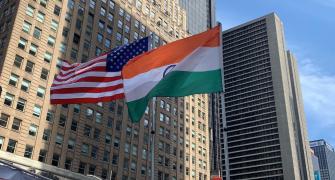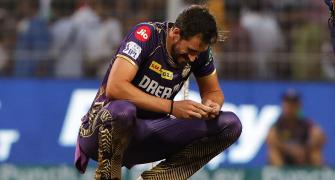"South Mumbai is the gateway for south India and Goa. So it still holds its prominence with the tourist. We have tied up with cruise liners and since it is a package deal, 80 to 100 rooms get booked," explains Rajiv Kaul, vice-president, Mumbai Hotels, and general manager at the Taj Mahal Palace and Tower.
Such initiatives reflect a tectonic shift in Mumbai's hotel industry. The action has shifted from south Mumbai to the north.
In north Mumbai alone, there are 21 hotels -- seven of them clustered around Mumbai's international airport -- with 4,555 rooms. In contrast, south Mumbai has six hotels, including the Taj, the Oberoi and the Intercontinental, with 2,040 rooms.
There is more. Between 2000-2001 and 2003-2004, the number of rooms in north Mumbai shot up by over 75 per cent, according to Mahajan & Aibara, a hotel management consultancy firm. In contrast, in south Mumbai, room capacity barely inched up by 3.55 per cent in the same period.
The Taj Mahal Palace and Tower has lost about 50 per cent of its business to Taj Land's End at Bandra, a north Mumbai suburb. The Oberoi has lost 10-15 per cent of its business to north Mumbai hotels. So it is planning to set up a hotel at the Bandra-Kurla complex, a north Mumbai business district.
A study by Cris-Infac, the research arm of Crisil, shows that in December 2003, north Mumbai hotels had a 78 per cent occupancy rate, the highest among the key business and leisure destinations.
"In north Mumbai, the demand for and supply of rooms have been growing rapidly. Events like the World Social Forum in January have also led to increased room occupancy," says Dipak Haksar, general manager at ITC Grand Maratha Sheraton, one of the hotels near the international airport.
In contrast, the average room occupancy rate in south Mumbai hotels is 56 per cent. Also, some of the smaller south Mumbai hotels have seen average room rates dip. Take the case of the 117-room Ambassador Hotel near Churchgate. The hotel's room rates nosedived from Rs 5,500 to Rs 4,500.
"South Mumbai's share in the overall pie has come down and since there is no additional supply of rooms except the Taj Wellington Mews service apartments, the existing players will have to work hard to hold on to their share," argues Charles Bennet, senior consultant at Mahajan &
That is why the Taj, like the Oberoi and other south Mumbai hotels, is switching focus from corporate executives, who increasingly stay in north Mumbai hotels (over 90 per cent of The Leela's customers; 84 per cent in the case of the Hyatt Regency), to a different clientele.
The Taj group's business hotel, the Taj President, now caters to a younger clientele and to corporate travellers who stay for a relatively long period. The hotel has seen a 20 per cent increase in this kind of clientele.
The 59-room Intercontinental, formerly Natraj, on Marine Drive, has zeroed in on garment exporters and diamond merchants situated near Worli, Parel and Zaveri Bazaar, and foreign institutional investors, says Abhay Manikeri, the hotel's director, sales and marketing.
The Ambassador is trying to attract tourists who stay in Mumbai for a day and has tied up with tour operators for this, according to general manager Nirmal Trivedi.
If corporate customers are staying in north Mumbai hotels, it is because, as Ratan Keswani, senior vice-president, Oberoi Hotels and Resorts, points out, business has migrated from south Mumbai to the north.
"With the IT and business process outsourcing firms setting up operations in north Mumbai, traffic has shifted," Keswani notes.
Furthermore, north Mumbai hotels also have the capacity to host large conventions. As a result, they are snaring much of the conference business.
Even so, upscale south Mumbai hotels still charge a higher average room rate (Rs 5,500) than their north Mumbai counterparts (Rs 4,600).
That is because there are a lot more premium hotels in south Mumbai than in the north and because of the fierce competition among the north Mumbai hotels, many of which are over a year old and have not yet broken even.
Sanjoy Pasricha, corporate head, sales and marketing, at The Leela, which is located near the airport, confirms that hotels in the north undercut one another whenever occupancy levels fall below 60 per cent.
The average room rate position in north Mumbai hotels could change once a business convention centre promoted by five hotels comes up near The Leela -- and south Mumbai hotels like the Taj and the Oberoi could find themselves hosting more wedding receptions and leisure travellers.







